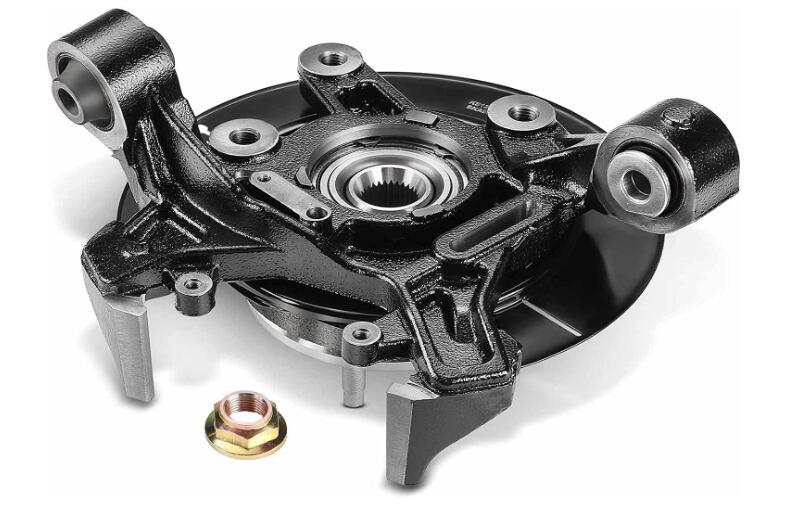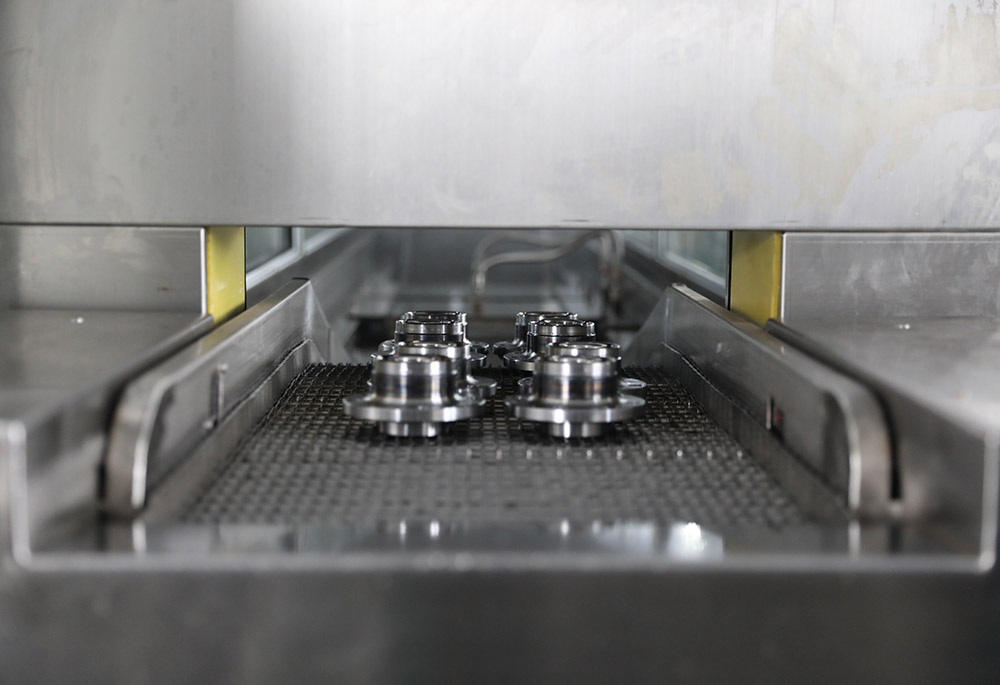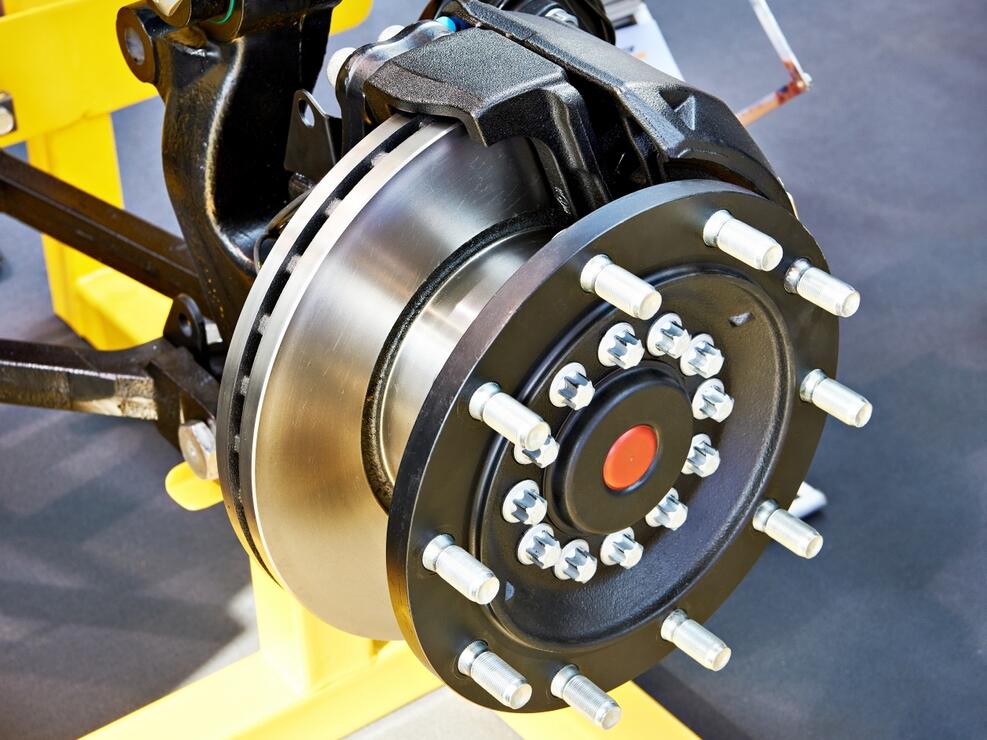Introduction
The quality and performance of wheel hubs are deeply influenced by the materials used in their manufacturing.
Over the years, manufacturers have constantly evolved their approach in pursuit of better materials that offer enhanced durability, strength, and cost-effectiveness.
This article explores this evolution in wheel hub manufacturing materials – from the traditional forged method to the cutting-edge powder metallurgy technique.
Part 1: Forged Wheel Hubs – The Traditional Approach
In the past, most wheel hubs were produced using the forging method.
Forging is a process where metal is heated and then hammered or pressed into the desired shape.
This process shapes the metal and refines its grain structure, enhancing its strength and durability.
One of the critical advantages of forged wheel hubs is their robustness.
The forging process aligns the grain structure of the metal along the lines of potential stress, making the finished product more resistant to impact and fatigue damage.
Moreover, forging allows for a broad range of designs, offering manufacturers great flexibility.
However, there are drawbacks to the forging process as well.
The production of forged wheel hubs can be labor-intensive and time-consuming.
It also requires significant energy input, making it less eco-friendly.
Moreover, the forging process can sometimes result in inconsistencies and defects in the finished product, leading to potential performance issues.
Part 2: The Shift to Casting
Many manufacturers shifted to casting to mitigate some of the drawbacks associated with forging.
Casting is when molten metal is poured into a mold to create the desired shape.
The mold is removed once the metal cools and solidifies, leaving the finished product behind.
Casting offers several advantages over forging.
Firstly, it’s less labor-intensive and more energy-efficient, which can reduce production costs.
Secondly, casting allows for greater design complexity since the molten metal can quickly fill intricate mold designs.
However, cast wheel hubs may offer different strength and durability than their forged counterparts.
The casting process does not refine the metal’s grain structure like forging, which can result in a less robust finished product.
Additionally, cast hubs are more prone to porosity – small, void-like imperfections that can compromise the product’s integrity.
Part 3: The Emergence of Powder Metallurgy
Many manufacturers have turned to powder metallurgy in the quest for a method that combines the best aspects of forging and casting.
In this process, metal powder is compacted into the desired shape and then heated (sintered) to bond the particles.
Powder metallurgy offers several unique advantages. It’s highly efficient, reducing waste by using nearly 100% of the metal powder.
The process is also less energy-intensive than forging and casting, making it more eco-friendly.
Additionally, powder metallurgy allows precise control over the product’s microstructure, enhancing its strength and durability.
However, one of the primary challenges of powder metallurgy is its relatively high upfront cost.
The equipment required for this process can be expensive, and the metal powders themselves can also be costly.
However, many manufacturers find that these initial costs are offset by the benefits and efficiencies of the process over time.
Part 4: The Future of Wheel Hub Materials
The evolution of wheel hub materials and manufacturing processes is continuing.
As technology and material science advance, we expect further improvements in the quality, performance, and sustainability of wheel hub assemblies.
One of the most promising development areas is using advanced materials like carbon fiber and composite materials.
These materials offer an exciting combination of strength, lightness, and corrosion resistance, which could bring about a new era in wheel hub design and performance.
Part 5: Advanced Metallurgical Processes
Beyond the raw materials, advancements in metallurgical processes have paved the way for enhanced quality and performance of wheel hubs.
Processes such as cold and hot isostatic pressing, metal injection molding, and laser sintering are increasingly being explored and implemented.
Cold Isostatic Pressing (CIP) and Hot Isostatic Pressing (HIP) apply high pressure from multiple directions on a metal powder, resulting in a product with highly uniform density and exceptional mechanical properties.
When used in conjunction with powder metallurgy, this isostatic pressing can result in wheel hubs that are both lightweight and highly durable.
Metal Injection Molding (MIM) is another process that holds promise.
It combines the flexibility of plastic injection molding with the strength and integrity of powdered metals.
This results in complex, high-performance parts that would be difficult to create using more traditional methods.
Wheel hubs manufactured using MIM can showcase detailed features and intricate designs without compromising strength or performance.
Laser sintering, a form of additive manufacturing, is yet another innovative process being explored.
This method uses a high-power laser to fuse small metal particles into a desired 3D shape.
This can allow for the creation of wheel hubs with complex geometries and internal structures that would be nearly impossible to produce using conventional manufacturing methods.
Part 6: The Role of Quality Control and Testing
No matter how advanced the materials or manufacturing processes may be, the final quality of the wheel hub assembly ultimately rests on rigorous quality control and testing.
The best wheel hub manufacturers employ a comprehensive suite of tests to ensure their products meet or exceed industry standards and customer expectations.
A dimensional inspection ensures the wheel hub assembly fits precisely as designed.
Techniques such as Coordinate Measuring Machine (CMM) inspection and 3D scanning can offer extremely precise measurements and highlight any deviations from the design.
Material testing, such as hardness testing and microstructural analysis, ensures the materials’ integrity.
It confirms that the metallurgical processes have produced the desired results, such as enhanced strength or improved corrosion resistance.
Finally, functional tests, including load and life cycle testing, ensure the wheel hub assembly performs as expected under real-world conditions.
These tests simulate the stresses and strains the wheel hub will encounter during use, helping to confirm its durability and reliability.
Part 7: Forging a Sustainable Future
In the face of increasing concerns about environmental sustainability and energy efficiency, the wheel hub manufacturing industry has a significant role to play.
By opting for more sustainable materials and energy-efficient manufacturing processes, the industry can contribute substantially to mitigating environmental impact.
Powder metallurgy, for instance, offers significant advantages in terms of sustainability.
Unlike traditional forging, which can be energy-intensive and result in considerable material waste, powder metallurgy allows for near-net-shape production, reducing waste and energy use.
Furthermore, materials used in powder metallurgy can often be recycled, further boosting its green credentials.
Another exciting development in sustainability comes with the increased use of lighter materials in wheel hub assembly production.
Reducing the weight of wheel hubs can contribute to improved fuel efficiency in vehicles, thereby decreasing their carbon footprint.
This focus on lightweight materials is anticipated to become even more vital as the push toward electric vehicles continues to gain momentum.
Part 8: Meeting and Exceeding Industry Standards
In the evolving landscape of wheel hub assembly manufacturing, adherence to industry standards is more critical than ever.
Standards ensure the product’s quality and reliability and the end user’s safety.
Among these, standards from the International Organization for Standardization (ISO) and the American Society for Testing and Materials (ASTM) are widely recognized.
ISO 9001 certification, for example, speaks to a manufacturer’s commitment to quality management principles, including a strong customer focus, top management involvement, a process approach, and continual improvement.
This globally recognized standard can give customers confidence in the manufacturer’s commitment to delivering high-quality wheel hub assemblies.
ASTM provides various materials, designs, and performance standards for wheel hubs.
Adherence to these standards ensures the hubs are designed and manufactured to withstand the different stresses and strains they will encounter in real-world usage.
In a globalized world, compliance with these internationally recognized standards is not just a token of quality and reliability but also a competitive advantage in the marketplace.
Conclusion
From the initial choice of materials to the final product testing, every step in the manufacturing of wheel hubs matters.
The shift towards powder metallurgy and advanced manufacturing processes demonstrates the industry’s commitment to innovation, performance, and sustainability.
Adherence to rigorous testing standards and industry certifications further underscores the focus on delivering safe and reliable products.
As technology advances, the prospects for further improvements in the quality and performance of wheel hubs are certainly on the horizon, promising a future of safer, more efficient vehicles for everyone.
This continual evolution is the driving force behind the wheel hub assembly industry’s ongoing success.




